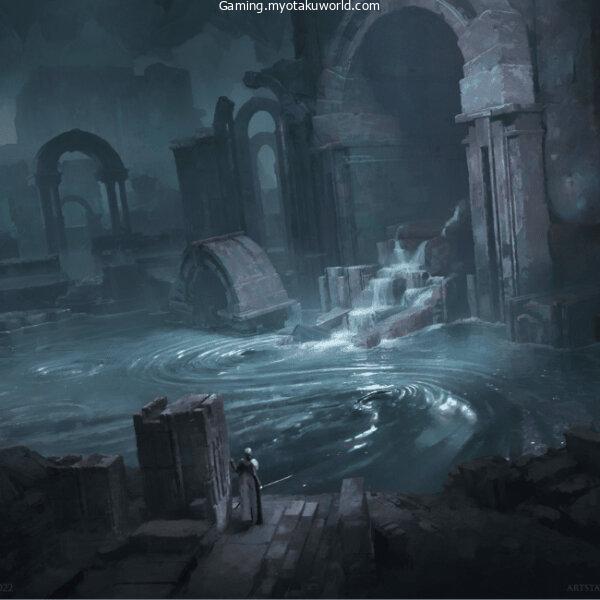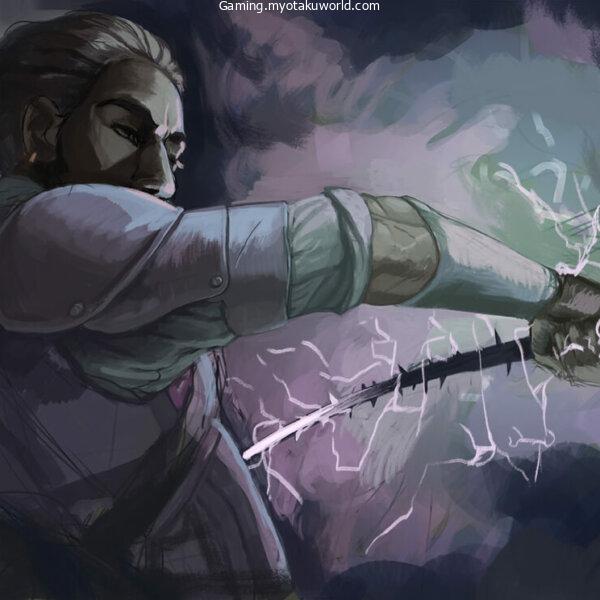In the popular anime One Piece, certain fruits called Devil Fruits give their eaters special abilities. For example, the main character, Monkey D. Luffy, turned into rubber after eating a Devil Fruit that makes the person who eats it turn into rubber.
The Calm-Calm Fruit is one of the Devil Fruits that caught my attention in the series. It gives the person who eats it the power to block out noise.
I wouldn’t say who ate the Devil Fruit because it could give away important details for people who want to read or watch One Piece. Still, the eater can make a place soundproof, which means that no one or thing can make noise there.
The eater can also stop noise from getting into the site. I was a little surprised to learn that the Silence spell in D&D can have such an effect.
Silence does exactly what its name says: it makes a certain area quiet. So, nothing from the outside can get in, and nothing from the inside can make a sound.
It may seem useless at first, but when you think about how many spells require the person casting them to speak, it becomes pretty interesting.
There are still some bad things about it, though. This Silence 5e guide will explain what they are and whether or not you should choose them.
- What is Silence in D&D 5e?
- How to Use Silence in D&D 5e
- Silence 5e Spell Description
- How to Cast Silence as a Ritual in D&D 5e
- How Does Silence Work in D&D 5e?
- Example Scenario for Using Silence in D&D 5e
- Who Can Cast Silence in D&D 5e?
- Creative and Useful Ways to Use Silence in D&D 5e
- Disabling Casters Under Challenging Situations Using Silence in D&D 5e
- Duplicating Counterspell Using Silence in D&D 5e
- FAQs
What is Silence in D&D 5e?
Silence is a level 2 illusion spell that can be found on page 275 of the Player’s Handbook. This spell is an illusion spell, like Minor Illusion and Disguise Self, because it messes with a person’s speech and hearing.
You can also use this spell as a ritual that doesn’t take up a spell slot. Here are the most important things to know about the Silence spell.
- Silence
- Level two illusion (ritual)
- Casting Time: one action
- Range: 120 feet
- Components: V, S
- Duration: Concentration, up to 10 minutes
How to Use Silence in D&D 5e

Before you can use the Silence spell to make a place very quiet, you must first meet its requirements. In earlier guides, I’ve talked about what many spells usually need.
So, if you want more information, you should read my Call Lightning 5e Guide, since it is similar to Silence, even though there are a few differences.
Both spells can work for up to ten minutes if the person who casts them can keep their mind on them. I have written about the rules of concentration before.
If you want a full explanation, you should read the Call Lightning 5e Guide. Both spells take one action to cast, have a range of 120 feet, and need both a verbal and a somatic component.
Silence is a level two spell that needs at least a level two spell slot, while Call Lightning is a level three spell (which requires at least a level three spell slot).
You can use a higher-level spell slot for both spells, but Silence will still have the same effects no matter what level spell slot you use.
You can also cast Silence as a ritual instead of a spell, which will save you a spell slot. For the rules of the ritual, go to the section “How to cast Silence as a ritual in D&D 5e.” Then, you can pick up here where you left off.
You have the power to cast the Silence spell if you meet all of its requirements. When you use a spell slot or do a ritual to cast it, you have to:
Choose a point 120 feet away from you where the 20-foot-diameter soundproof sphere will start.
After you choose an area, go to the next section, “How does Silence work in D&D 5e?” to find out more about how the spell works.
Silence 5e Spell Description
The spell’s text from the Player’s Handbook is as follows:
For the duration, no sound can be created within or pass through a 20-foot-radius sphere centered on a point you choose within range. Any creature or object entirely inside the sphere is immune to thunder damage, and creatures are deafened while entirely inside it. Casting a spell that includes a verbal component is impossible there.
How to Cast Silence as a Ritual in D&D 5e
First, you need to see if you can use rituals to cast spells. Most of the time, this skill is gained through a class feature.
The Artificers, Bards, Clerics, Druids, and Wizards can all cast spells as part of a ritual. If you are a class that can’t cast rituals, like a Sorcerer, you can’t use spells that have the ritual tag as rituals.
Second, you must have the spell ready or on a list of spells you know. If your Ritual Casting skill lets you get out of this rule, you can.
For example, Wizards don’t have to prepare the spell; as long as it’s in their spell book, they can use it as a ritual.
When you cast Silence as a ritual, you don’t use up a spell slot. Instead, you do the ritual for ten minutes longer than the normal time it takes to cast the spell.
After you finish the ritual, you cast the spell like you normally would. When you use a ritual to cast a spell, you can’t cast it at a higher level than it is.
How Does Silence Work in D&D 5e?

A soundproof barrier spreads out from the chosen central point, and the area within it becomes incredibly silent. The following effects immediately occur:
- Sound cannot be produced or pass through the sphere. For example, a glass vase breaking inside the Silence sphere does not make any noise. Additionally, nobody inside the Silence sphere can hear the ferocious roar from a creature outside it.
- Creatures in the sphere cannot cast a spell requiring the verbal component. Consequential to the previous point, anyone in the sphere automatically fails to cast spells requiring you to talk since no sound can come out of your mouth.
- Creatures or objects in the sphere become immune to thunder damage. Becoming immune in D&D means, you do not receive damage (in this case, you do not receive thunder damage).
- Creatures in the sphere cannot hear. This effect is due to the “Deafened” condition from which creatures in the sphere suffer.
- Creatures in the sphere automatically fail ability checks requiring the sense of hearing. This effect is due to the “Deafened” condition from which creatures in the sphere suffer.
This spell can last up to ten minutes if the person who casts it can focus on it the whole time. Even though the Silence spell is easy to use, many players find it hard to understand.
For example, some people wonder if a spellcaster from outside the sphere can target a creature inside it with a spell that needs a verbal component. In the next section, there’s an experiment that will answer all of your questions.
Example Scenario for Using Silence in D&D 5e

Welcome to Arthur’s Lab, where even the Silence spell can’t keep us from talking about how cool it is to try out magic. Marshal the Half-elf Wizard will be a part of this experiment, but he will be late (traffic is heavy these days).
Instead, we have Mr. Operator the Elf Ranger (who also helped me with my Heavy Crossbows 5e Guide) and a new friend, Shorty the Halfling Bard. They both know how to cast the spell.
We also “brought along” a thief to take part in our experiment. We told him to stand still so that no one gets hurt by accident. We’ll also move to a private island because the normal lab might be too small.
Before we start, you need to know what the following spells do, because our participants will use them to show how Silence works. Note that all of these spells can be cast in one action and last for an instant.
| Spell | Range | Components | Effects |
| Thunderwave | Self (15-foot cube) | Verbal, Somatic | Everyone in a 15-foot cube from you makes a Constitution saving throw. If the save is a failure, the creature receives 2d8 thunder damage, and the spell pushes them away by ten ft. from you. If the save is a success, the creature gets half the damage, and the spell does not move them out. The spell also pushes unsecured objects within the area of effect and emits a loud, thunderous boom. |
| Vicious Mockery | 60 feet | Verbal | You target a creature you see within 60 ft. of you. If they can hear you, it makes a Wisdom saving throw. If the save fails, they receive 1d4 psychic damage and a disadvantage on their next attack roll. |
| Fire Bolt | 120 feet | Verbal, Somatic | You target a creature you see within 120 ft. of you. You make a ranged spell attack against them, and if it hits, they take 1d10 fire damage. |
First Scenario: Casting Silence as a Ritual
We must first cast the spell. Shorty and Mr. Operator can use a level one spell slot to cast the spell, but Shorty can also cast it as a ritual.
She does this, and her ritual takes ten minutes. After ten minutes, the Silence spell starts to work. She chooses a point within 120 feet of her, and from that point comes a sphere with a 20-foot diameter.
Because she did it as a ritual, she did not lose a spell slot. If you don’t have many spell slots, you can use rituals to cast spells, but it takes a long time.
Rituals only work well if you plan for them and don’t try to do them on the spot. Remember that ten minutes in battle is 100 turns; a battle would not last that long.
Second Scenario: Casting Silence Using a Spell Slot
Shorty cancels her Silence spell and gives it to Mr. Operator to cast instead. As Mr. Operator throws it, a sphere with a 20-foot diameter comes out of a spot he chooses.
The effect of the Silence area is shown in the picture below. Mr. Operator uses a spell slot of level 1, but he can also use a spell slot of level 2 or higher. Still, the effect will be the same no matter what level the spell slot is.
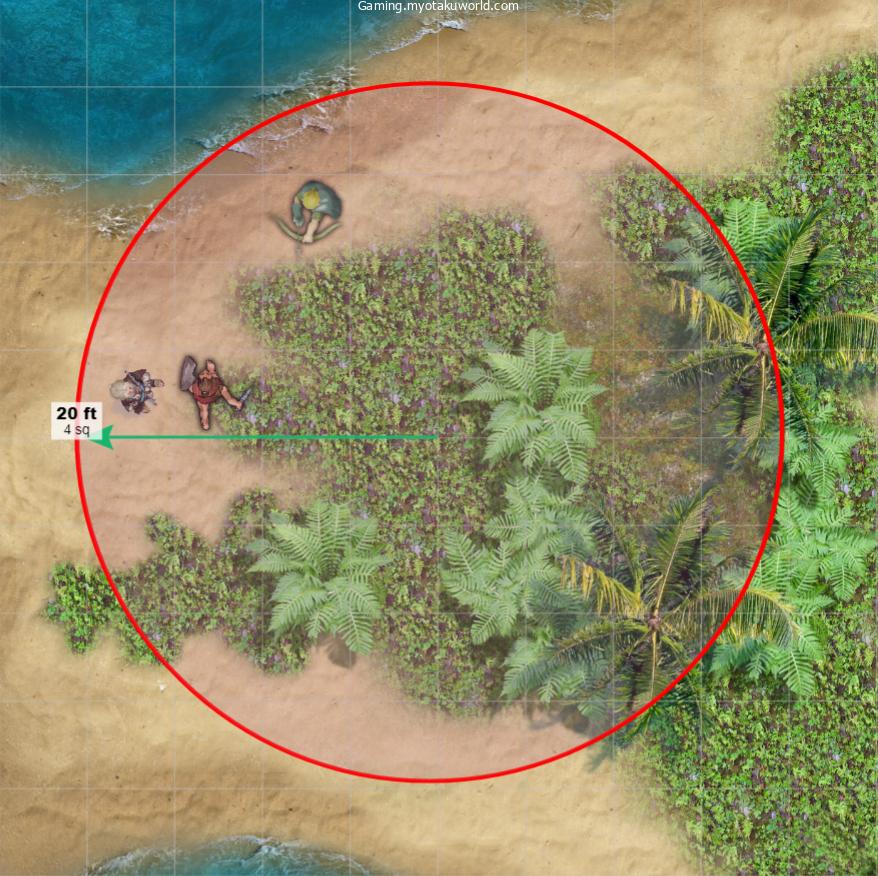
Third Scenario: Casting Thunderwave Inside and Outside Silence
Shorty will try to cast Thunderwave both inside and outside of the Silence area for this experiment. She can’t cast the spell in the Silence area, though, because it needs a verbal component, which means she has to speak. So, she moves outside the area of Silence and casts the spell.
In this case, Mr. Operator and the thief move close to Shorty. In the picture below, the area where the Thunderwave spell works is shown by the yellow square.
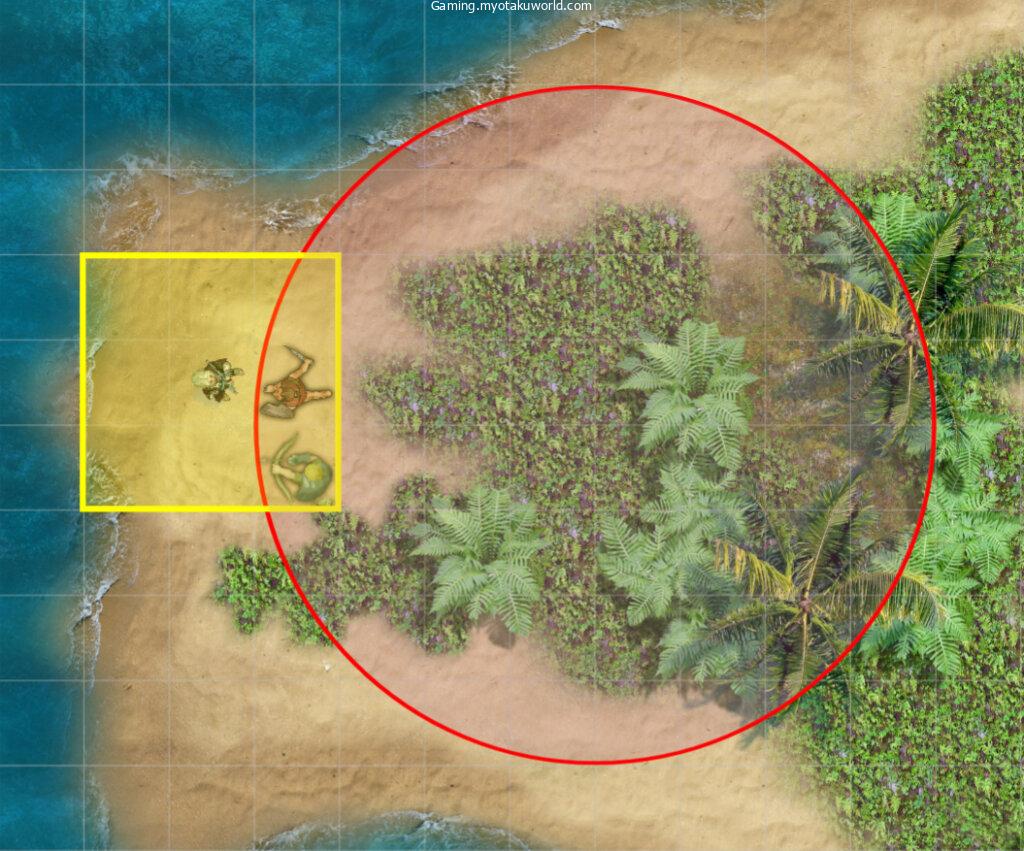
Both Mr. Operator and the bandit have to make a Constitution saving throw because of Thunderwave. Mr. Operator makes the save, but the bandit fails.
Normally, the spell would do 2d8 thunder damage, but Mr. Operator and the bandit take no damage because of the Silence spell.
The Silence spell only stops the thunder damage, so the other effects still happen. So, the Thunderwave spell pushes the thief ten feet away from Shorty (Mr. Operator remains in his position because he succeeded in his save).

As you can see, spellcasters can only use spells that require them to speak outside of the Silence area. Also, spells from outside the Silence area can still affect the people inside it, as long as the spells don’t require their targets to hear something.
The Thunderwave spell doesn’t hurt the bandit because the Silence spell protects him from it. If the extra effects of the spell don’t need sound, they will still work (e.g., Thunderwave pushing back creatures on a failed saving throw). Think of it as a big sound wave. In the Silence area, the sound goes away, but the tide keeps moving.
Fourth Scenario: Casting Vicious Mockery Whose Target is Inside Silence
Shorty then brings in Vicious Mockery. She is still outside of the Silence area, so she can still use spells that need her to speak.
She goes after the thief in the Silence area because she can see him there. But according to how the spell works, if the target can’t hear the caster’s words, nothing happens. Silence makes it so that the bandit can’t hear her, so the spell can’t work.
The main point of this situation is that you need to pay close attention to the spells you cast. If the details of a spell say that it needs a sense (like hearing) to work, then it won’t work in a place that takes away that sense.
Fifth Scenario: Casting Fire Bolt, Whose Target is Inside Silence
Marshal is now here! When he gets to the private island, he sees the thief and decides not to go into the Silence area.
Instead, he casts Fire Bolt and aims it at the thief because he is in the spell’s range (within 120 ft. of the caster).
He uses a spell attack from a distance, and it goes through the bandit’s Armor Class. The question is whether or not the Fire Bolt will hurt.
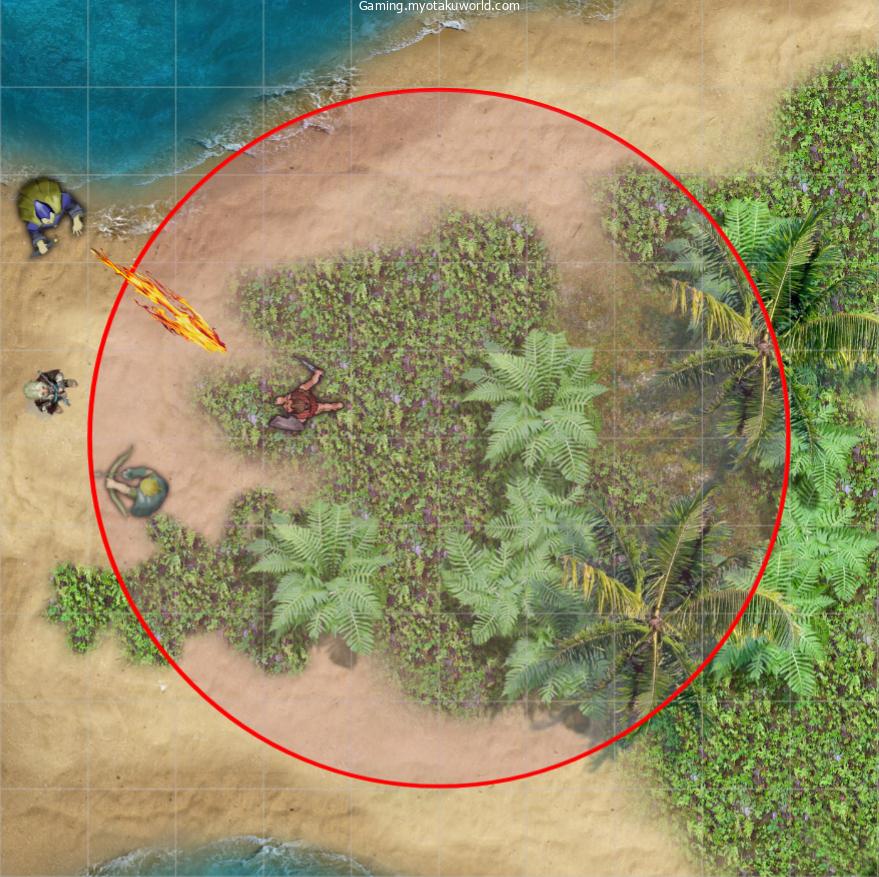
The correct answer is that the Fire Bolt will hurt. The Silence area only stops thunder damage, so Fire Bolt’s fire damage still goes through.
Marshal can also cast the spell Fire Bolt, which needs to be spoken, because he is not in the Silence area. Back to the situation at hand, Marshal’s Fire Bolt does six fire damage to the bandit.

In summary:
- Casters cannot cast spells in the Silence area if they require the verbal component.
- Casters deal zero thunder damage to targets inside the Silence area.
- Spells will not work if they require their target to hear something.
- Effects of spells will still work if it does not require the sense of hearing or deal thunder damage.
- Other types of damage aside from thunder damage still work inside the Silence area.
Who Can Cast Silence in D&D 5e?
The Silence spell can be used by three classes (Bard, Cleric, and Ranger), five subclasses (Divine Soul Sorcerer, Fathomless Warlock, Land (Desert) Druid, Shadow Monk, and Undying Warlock), and one race (Gnomes with the Mark of Scribing).
Classes That Can Cast Silence in D&D 5e
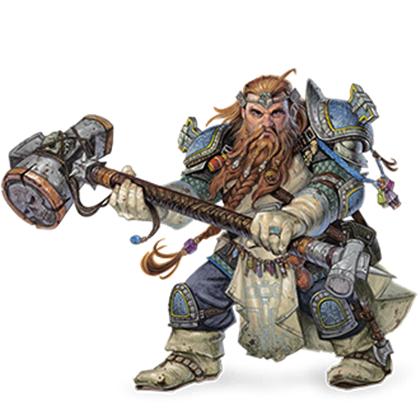
With the Silence spell, Bards, Clerics, and Rangers can make barriers that can’t be heard through. Since it’s a level 2 spell, these classes need at least a level 2 spell slot.
At level three, Bards and Clerics get two second-level spell slots, while Rangers get them at level five. This is the first class level at which they can cast the spell. Here are the sources for each D&D 5e class that can use the Silence spell.
- Bard: Player’s Handbook, page 51
- Cleric: Player’s Handbook, page 56
- Ranger: Player’s Handbook, page 89
Subclasses That Can Cast Silence in D&D 5e
Five subclasses have access to the Silence spell; below are the essentials for each subclass.
| Subclasses that can cast Silence | Subclass Feature for Silence | Originating Class | Subclass Source | Class Source |
| Divine Soul | Divine Magic | Sorcerer | Xanathar’s Guide to Everything, page 50 | Player’s Handbook, page 99 |
| Fathomless | Expanded Spell List | Warlock | Tasha’s Cauldron of Everything, page 72 | Player’s Handbook, page 105 |
| Land (Desert) | Circle Spells | Druid | Player’s Handbook, page 68 | Player’s Handbook, page 64 |
| Shadow | Shadow Acts | Monk | Player’s Handbook, page 80 | Player’s Handbook, page 76 |
| Undying | Expanded Spell List | Warlock | Sword Coast Adventurer’s Guide, page 139 | Player’s Handbook, page 105 |
The Divine Magic subclass feature of sorcerers with the Divine Soul sorcerous origin gives them access to the Silence spell.
Sorcerers usually learn new spells and can change the ones they already know as they level up. The Diving Magic subclass lets them choose a cleric spell instead of a mage spell during this step. Silence is a Cleric spell, so Divine Soul Sorcerers can learn it as soon as they reach level 1.
With their Expanded Spell List subclass feature, warlocks who have The Fathomless and The Undying as their patron from another world can use the Silence spell. It gives them more spells to choose from, including the Silence spell. At level three, warlocks get level-two spell slots, so they can get the Silence spell.
The Circle Spells subclass feature of Druids in the Circle of the Land gives them access to the Silence spell. It gives these Druids a bunch of ready-to-use spells that depend on which land they are connected to.
The Silence spell can only be used by Druids who are linked to the desert. They can cast this spell as soon as they reach level 3, when they get two spell slots of level 2.
Lastly, the Shadow Acts subclass feature of Monks who follow the Way of the Shadow gives them access to the Silence spell. It lets them use two ki points to do the same things as a number of spells, including Silence.
At level 3, when they get this subclass ability, they have three ki points. So, they can start using the Silence spell as soon as they reach level 3.
If you let content from Unearthed Arcana into your campaign, you can also use the Raven Queen Warlock, Favored Soul Sorcerer, Lurker in the Deep Warlock, and Undead Warlock since they can also use the Silence spell.
Races that Can Cast Silence in D&D 5e

The Silence spell can only be used by Gnomes with the Mark of Scribing. But you should know that this race was added to the game in the book Eberron: Rising from the Last War.
More specifically, you can find out about them on page 47. It wouldn’t make sense if your table’s campaign wasn’t set in Eberron. So, before you use it in your campaign, ask your DM if you can.
Because of their “Spells of the Mark” race trait, they can use the Silence spell. They must, however, be from a class that knows how to cast spells, like a Wizard or Bard.
Think of this subclass feature as an extra spell you can add to your list. No matter what spellcasting class you are, you can add Silence to your kit.
Creative and Useful Ways to Use Silence in D&D 5e
Some players might say that the Silence spell is not worth getting. If someone in its range doesn’t want to lose their hearing, they can just leave, right?
In fact, you should be focusing on better spells on the battlefield. You can think of ways to make it good if you play around with it and use your imagination. Here are some ideas that came to mind:
- Opening locked barriers silently
- Abusing the Sorcerer’s Subtle Spell
- Disabling casters under challenging situations
- Duplicating Counterspell
Opening Locked Barriers Silently Using Silence in D&D 5e
Stealth missions are an important part of any D&D campaign (or at least in my games). As a DM who is interested in how players deal with silence, I often put my players in situations where they need to sneak into a well-guarded place as quietly as possible. When you have a problem like this, the Silence spell is a good one to have.
Locked doors, gates, chests, and other things can make it hard to get inside sometimes. Most of the time, a simple lockpick won’t help. With Silence, you don’t have to worry about making noise when you break down the door.
Since you are not in fast-paced combat, you can even use it as a ritual if you can. But don’t make it a ritual if you are in a hurry and ten minutes is too long to wait.
Is the inside of the gate locked? You can cast Silence and then use an explosive to blow it up. Do you need to get something out of a chest that is very hard to open?
You can break Silence up by using it. You can also use the Knock spell to open them. The Knock spell usually makes a loud noise that can be heard from 300 feet away. If you use it outside of the Silence area and aim it at the locked barrier, nothing will be heard.
Abusing the Sorcerer’s Subtle Spell Using Silence in D&D 5e
At level 3, sorcerers get a class feature called Metamagic. It lets them change the way their spells work for the cost of sorcery points, which are a kind of currency for these classes.
The Subtle Spell is one of the abilities of Metamagic. For one sorcery point, Sorcerers can cast spells that don’t need a physical or verbal part. Add this ability to Silence, and you’re done!
The first step is to be a Sorcerer at level 3. The second step is to have a friend use the Silence spell. The third step is to use the Subtle Spell from Metamagic.
You can now cast spells that require you to speak while your enemies can’t in the Silence area. Imagine how they would react if you suddenly used the spell Levitate to fly away. When you are the one who is stuck in a Silence spell, this method can help.
Disabling Casters Under Challenging Situations Using Silence in D&D 5e
Do you remember that I said people could just leave the area where Silence was working? You can avoid this problem by casting Silence in a place where the caster can’t just run away.
For example, Silence in a small room can kill a spellcaster. Even in spaces bigger than the Silence area, spellcasters can be forced to stand in a corner to cast spells. Also, there are other things that can be done to make things hard.
You can cast spells that turn the ground into hard terrain in the area of effect of Silence. Spells like Entangle, Evard’s Black Tentacles, Grease, and Web are all ways to stop someone from moving.
By using this method, you make it hard for a spellcaster to leave the Silence area, which stops them from casting spells. I think that if you want the other spell to work better, you should do it with a friend.
Duplicating Counterspell Using Silence in D&D 5e
Counterspell is a valuable spell that many players want to have. It stops someone from casting a spell, which can help battles go more smoothly and avoid unnecessary problems.
It is a level 3 spell, though. Most spellcasters can have level three spell slots as early as level five, so it isn’t too hard to get. But if you don’t have spell slots at level 3, use Silence.
In D&D 5e, you can get a spell ready and then use it when certain conditions or triggers happen that you choose. For instance, you can prepare a Fire Bolt cantrip on your turn and set it to go off when an enemy is carrying something that can catch fire.
Your opponent will pick up a stack of hay on their next turn. Your trigger has been set off, so you can use Fire Bolt on them even when it’s not your turn.
So, you can prepare the Silence spell and set it to go off when an enemy is about to cast a spell with a verbal component.
This method only works for spells with verbal parts, but of the 514 spells in the official sources, at least 482 of them have verbal parts. But if you want to use Counterspell, I wouldn’t count on this method. I suggest you do this technique as a last-minute effort.
There are bad things about being ready to use Silence to copy Counterspell. First of all, it doesn’t use up a spell slot. When the spellcaster tries to cast their spell, you just make a soundproof wall around them.
So, their spell never started because they did not meet the verbal requirement. Then the person who cast the spell can just leave the Silence area (unless you make it difficult for them to go).
Second, you have to use an action to get the spell ready, but you can cast Counterspell right away as a reaction. Third, getting ready to cast a spell takes concentration, so if you get hurt, your spell won’t work. Fourth, you might not be able to use the ready Silence if your trigger never goes off.
If something goes wrong while you are getting ready to cast the spell, you lose a level two spell slot. So, you should think about whether or not the risk is worth it.
FAQs
Is Silence a Wizard spell in D&D 5e?
No, silence is not part of the wizard spell list in d&d 5e. The classes that have this spell in their spell list are bards, clerics, and rangers.
CAN A PALADIN CAST SILENCE IN D&D 5E?
No, paladins can’t use the spell “silence” in D&D 5e because it’s not on their list of spells for their class. The silence spell is only on the list of spells for the bard, cleric, and ranger.
CAN YOU CAST COUNTERSPELL ON SILENCE IN D&D 5E?
In D&D 5e, you can use counterspell to stop someone from using silence. Since the silence spell is only level 2, it fails right away and has no effect after the counterspell.
DOES SILENCE STOP SPELLS IN D&D 5E?
Yes, in D&D 5e, silence can stop spellcasters from casting spells that have a verbal component. Silence creates a 20-foot-wide sphere in which no sound can be made or get through. Spells with a verbal part require you to talk, so if you are in the area where the silence is working, you can’t talk. You can’t cast these spells because of this.
DOES SILENCE STOP THUNDER DAMAGE IN D&D 5E?
Yes, silence stops thunder damage in d&d 5e because it grants the people inside its area of effect immunity to thunder damage.





